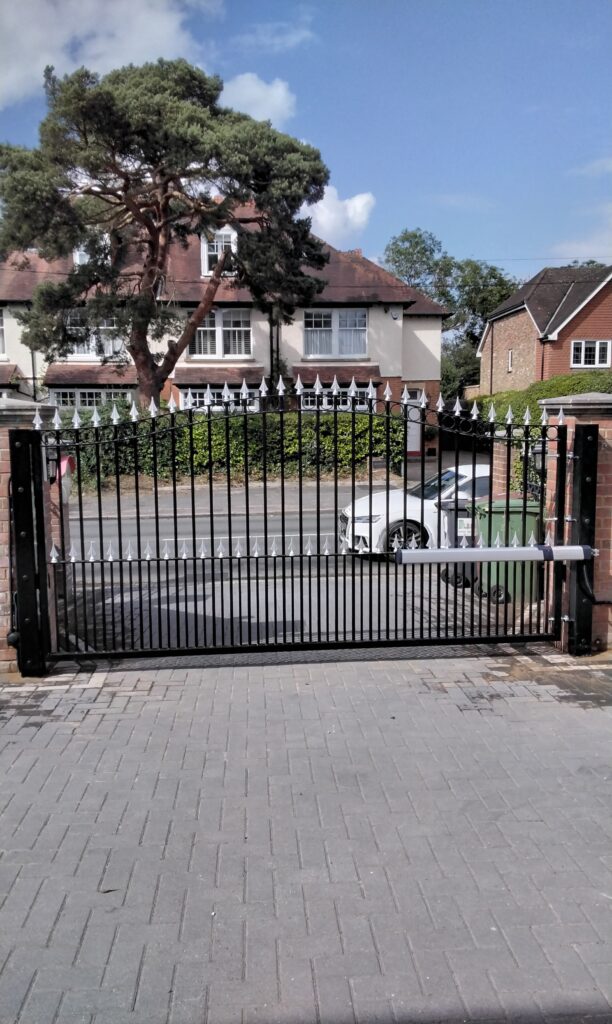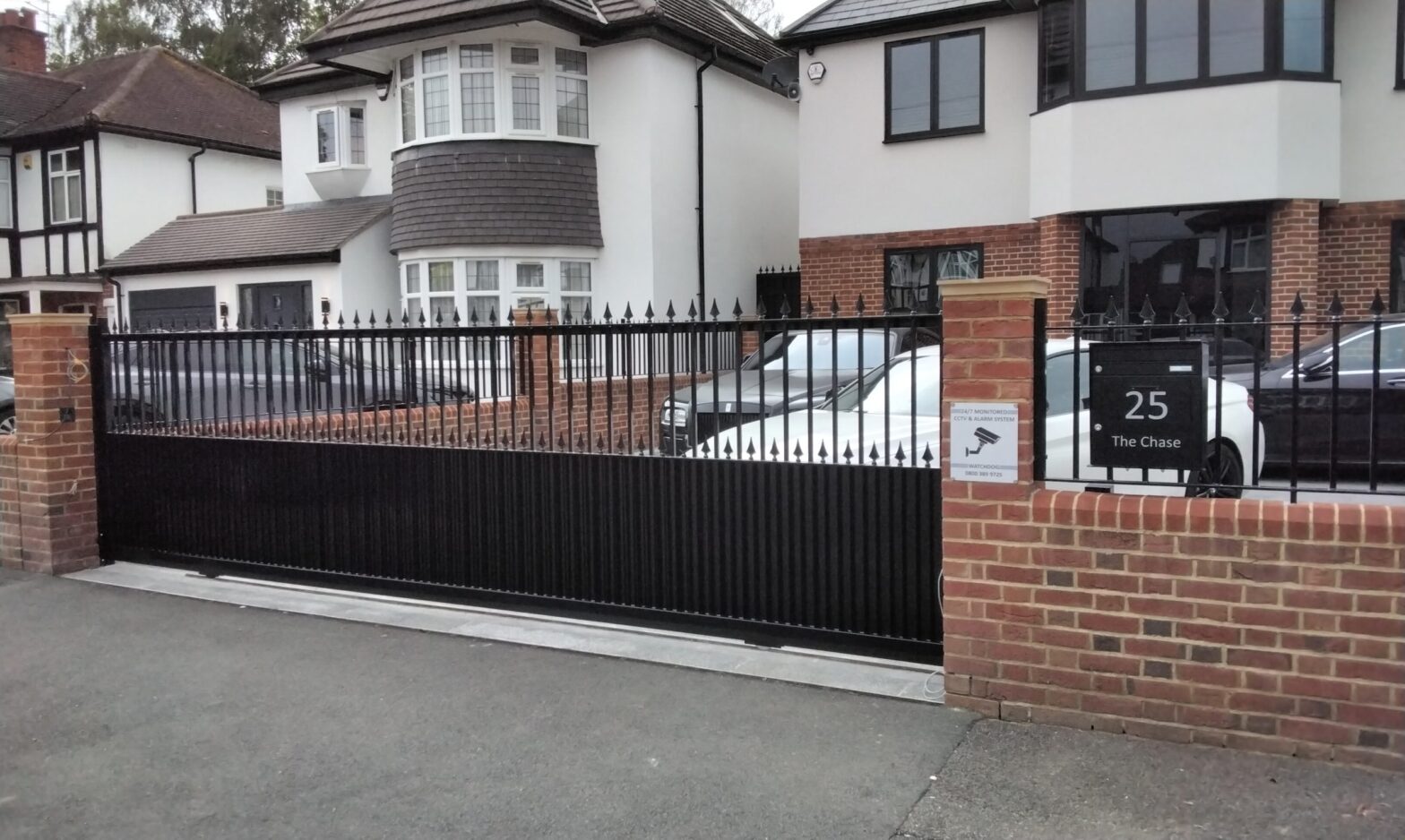
Do I Need Planning Permission to Put a Gate on My Driveway?
Installing driveway gates can significantly enhance the security and curb appeal of your property. However, before you go ahead and install those driveway gates, it’s crucial to understand the planning permission requirements in the UK. Many homeowners ask, “Do I need planning permission to put a gate on my driveway?” The answer depends on several factors including the height of the gate, whether your property is a listed building or located in a conservation area, and if your project falls under permitted development rights.
If you’re unsure about your specific situation, contact Security Gates R Us to get expert advice tailored to your property.
Height Restrictions for Driveway Gates
One of the key rules for installing driveway gates without planning permission relates to their height. Generally, planning permission is not required if your gate is:
- No more than 1 metre high when it is next to a highway used by vehicles or the footpath of such a highway.
- No more than 2 metres high elsewhere on your property.
These height restrictions are designed to ensure that gates do not obstruct visibility or negatively impact the street scene. For example, if you want to install electric gates at the entrance of your driveway, keeping within these height limits means you are less likely to need planning permission.
Replacing Existing Driveway Gates
If you are simply replacing an existing driveway gate with one that is the same height or shorter, you will generally not require planning permission. This is because you are not making any significant changes that would affect the overall appearance or structure of your property’s boundary.
Listed Buildings and Conservation Areas
Planning permission rules become more stringent if your property is a listed building or located within a conservation area. Listed buildings have special protections because of their historic or architectural importance. In these cases, any changes, including installing or replacing driveway gates ,usually require permission from the local planning authority.
Similarly, conservation areas are designated to preserve the character of a neighbourhood, so you may face additional restrictions when installing driveway gates here. If your property is in such an area, always check with your local council before starting any work.
Permitted Development and Article 4 Directions
Many driveway gate installations fall under permitted development rights, meaning they do not need planning permission. However, some local councils issue Article 4 Directions that remove these rights for specific properties or areas. If an Article 4 Direction applies, you will need to apply for planning permission even if your gate complies with height restrictions.
When Planning Permission Is Required: A Guide to Installing Gates
Planning to enhance your property’s security and curb appeal with a new gate? Before you proceed, it’s crucial to understand when planning permission is necessary. Various factors, including gate height, location, and the property’s status, can influence whether you need to submit an application. This guide outlines key considerations to help you navigate the planning process.
Height and Location: When Permission Is Necessary
In the UK, planning permission is typically required for gates under the following conditions:
Gates Adjacent to a Highway
If your gate is next to a highway used by vehicles or the footpath of such a highway, planning permission is needed if the gate exceeds:
- 1 metre in height from ground level.
Gates Elsewhere on the Property
For gates located elsewhere on your property, permission is required if the gate exceeds:
- 2 metres in height from ground level.
These height restrictions ensure that gates do not obstruct visibility or traffic flow, maintaining safety standards.
Listed Buildings: Special Considerations
If your property is a listed building or within the curtilage of one, planning permission is mandatory for installing or altering gates. This applies regardless of the gate’s height or location. Listed buildings are legally protected due to their historical or architectural significance, and any changes must preserve their character.
Article 4 Directions: Removal of Permitted Development Rights
An Article 4 Direction is a planning tool used by local authorities to remove certain permitted development rights. If your property is subject to such a direction, you may need planning permission for works that would otherwise be permitted development, including the installation of gates. Article 4 Directions are often applied in conservation areas to protect the area’s character.
Conservation Areas: Stricter Regulations
Properties located within conservation areas face stricter planning controls. Even if your gate complies with general height restrictions, you may still require planning permission to ensure that the development preserves or enhances the area’s character. This includes the installation of gates, fences, and walls.
Choosing the Right Gate: Wooden vs. Electric Gates
When selecting a gate, consider both functionality and aesthetics:
- Wooden Gates: Offer a traditional and natural appearance, blending well with various landscapes. They can be a suitable choice for properties in conservation areas or those with listed status, provided they meet planning requirements.
- Electric Gates: Provide enhanced security and convenience, allowing remote access. However, due to their automated nature, they may require additional planning considerations, especially if they exceed standard height restrictions.
Additional Considerations for Driveway Gate Installation
Installing a driveway gate can enhance your property’s security and curb appeal. However, before embarking on this project, it’s crucial to consider various factors to ensure compliance with local regulations and to achieve a practical and aesthetically pleasing result.
Gate Design and Materials
When selecting a gate design and materials, it’s essential to choose options that complement your property’s character and comply with local aesthetics regulations. For instance, properties within conservation areas or adjacent to listed buildings may have restrictions on the materials and designs used to maintain the area’s historical integrity. Opting for traditional materials like wrought iron or timber can help blend the gate seamlessly into the environment, avoiding the need for planning permission. Always consult with your local planning authority to ensure your choices align with any specific guidelines.
Automated Gates
Automated gates offer convenience and enhanced security. However, their installation may require additional considerations. Automated gates must comply with specific safety standards, including safe opening and closing speeds, sensors to detect obstructions, and emergency stop mechanisms. These safety features are not only crucial for the protection of individuals but may also influence planning considerations. In some cases, automated gates may require planning permission, especially if they exceed certain height restrictions or are located within conservation areas. It’s advisable to consult with your local planning authority to determine if your automated gate installation requires planning permission.
Visibility and Safety
Ensuring that your driveway gate does not obstruct visibility splays or pedestrian pathways is paramount for safety. According to the Highways Act 1980, gates must not open outwards onto a public road, highway, or pavement in a way that obstructs it. Therefore, all driveway gates must open inwards onto your property. This regulation is in place to prevent accidents and ensure the safety of pedestrians and drivers alike. Before installation, assess the gate’s placement to ensure it does not impede visibility or access.
Retrospective Applications
Installing a gate without the necessary permissions can lead to enforcement action, including the possibility of having to remove the gate. If you have installed a gate without obtaining planning permission, it’s advisable to submit a retrospective application to your local planning authority. While there’s no guarantee of approval, addressing the issue proactively can demonstrate your commitment to compliance and may result in a more favourable outcome.
Installing a driveway gate can enhance your property’s security and curb appeal. However, before you proceed with your installation, it’s essential to understand the planning permission requirements to ensure compliance with local regulations.
How to Check and Apply for Planning Permission
Contacting Local Authorities
Before embarking on your driveway gate project, it’s crucial to seek planning permission from your local planning authority (LPA). Reach out to your LPA to inquire about specific requirements for your area. They can provide guidance on whether your proposed gate installation complies with local planning policies and whether any restrictions apply.
Application Process
To apply for planning permission, follow these steps:
- Prepare Necessary Documentation: Gather all required documents, including detailed plans of your proposed gate installation, site location plans, and any other supporting materials.
- Submit Application: Submit your application to your LPA, either online through the Planning Portal or by following the submission process outlined by your local authority.
- Pay Application Fee: Ensure that you pay the applicable application fee as determined by your LPA.
- Await Decision: Your LPA will assess your application and make a decision. This process typically takes several weeks, depending on the complexity of your proposal.
Online Resources
For more information and to submit your application online, visit the Security Gates R Us. This official resource provides guidance on the application process, required documentation, and fee calculations.
Additional Considerations
- Conservation Areas: If your property is located within a conservation area, additional restrictions may apply. In such cases, it’s advisable to consult with your LPA to understand the specific requirements and ensure compliance.
- Planning Conditions: Upon approval, your LPA may impose certain planning conditions that you must adhere to during the installation process. These conditions are legally binding and must be followed to avoid potential penalties.
- Sliding Gates: If you’re considering installing sliding gates, ensure that your plans include detailed specifications and comply with local regulations regarding gate design and installation.
Conclusion
Before installing a gate, it’s essential to determine whether planning permission is required. Factors such as gate height, location, and the property’s status—whether it’s a listed building, within a conservation area, or subject to an Article 4 Direction—can all influence this decision. Always consult with your local planning authority to ensure compliance and avoid potential legal issues.
For those considering enhancements to their property’s security, Security Gates R Us provides tailored solutions to meet individual needs. Whether you’re interested in automated driveway gates or robust railings, their expertise ensures optimal results. Reach out to them at 07401 217 653 or 0208 4322 999 to discuss your requirements and receive personalised advice. With a commitment to quality and customer satisfaction, they are a trusted choice for securing your property.our home.

